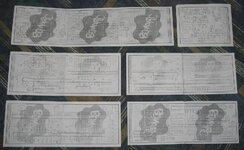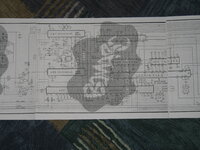Trash80toHP_Mini
NIGHT STALKER
Quick question about this one. Are layer count, complexity or board size problematic?
If not, the board seems like it might be worth doing in its original form and factor. But to me it seems to be a far more flexible platform for spinning off upgraded derivatives than anything else in the Macintosh II series, SE/30 included.
Given the amazing progress @Bolle has made and is now working on with his co-conspirators on the VidCard front, it may be time to take a look at possibilities?
Don't recall offhand, but if PPC upgrade capable, mashing a much enhanced version of the IIsi into the SE/30 form factor might lead to the SE/30/PPC of myth and impossible dreams?
Upgrade to a pair of 72pin SIMMs looks the plan as the hardware is limited on the board, ROM limit to less than 128MB seems unlikely?
Vampire Video subsystem removal frees up $E for far more capable video on board.
Multiple PDS expansion (NuBus Inclusive makes it more expandable at system clock and equals overall IIci expansion at four interrupts.
Three available I/O channels on PDS at 20MHz (or more) trumps the IIfx' NuBus I/O at 10MHz
Dunno, seems like the time to bounce this morning's musings off the wall?
If not, the board seems like it might be worth doing in its original form and factor. But to me it seems to be a far more flexible platform for spinning off upgraded derivatives than anything else in the Macintosh II series, SE/30 included.
Given the amazing progress @Bolle has made and is now working on with his co-conspirators on the VidCard front, it may be time to take a look at possibilities?
Don't recall offhand, but if PPC upgrade capable, mashing a much enhanced version of the IIsi into the SE/30 form factor might lead to the SE/30/PPC of myth and impossible dreams?
Upgrade to a pair of 72pin SIMMs looks the plan as the hardware is limited on the board, ROM limit to less than 128MB seems unlikely?
Vampire Video subsystem removal frees up $E for far more capable video on board.
Multiple PDS expansion (NuBus Inclusive makes it more expandable at system clock and equals overall IIci expansion at four interrupts.
Three available I/O channels on PDS at 20MHz (or more) trumps the IIfx' NuBus I/O at 10MHz
Dunno, seems like the time to bounce this morning's musings off the wall?



